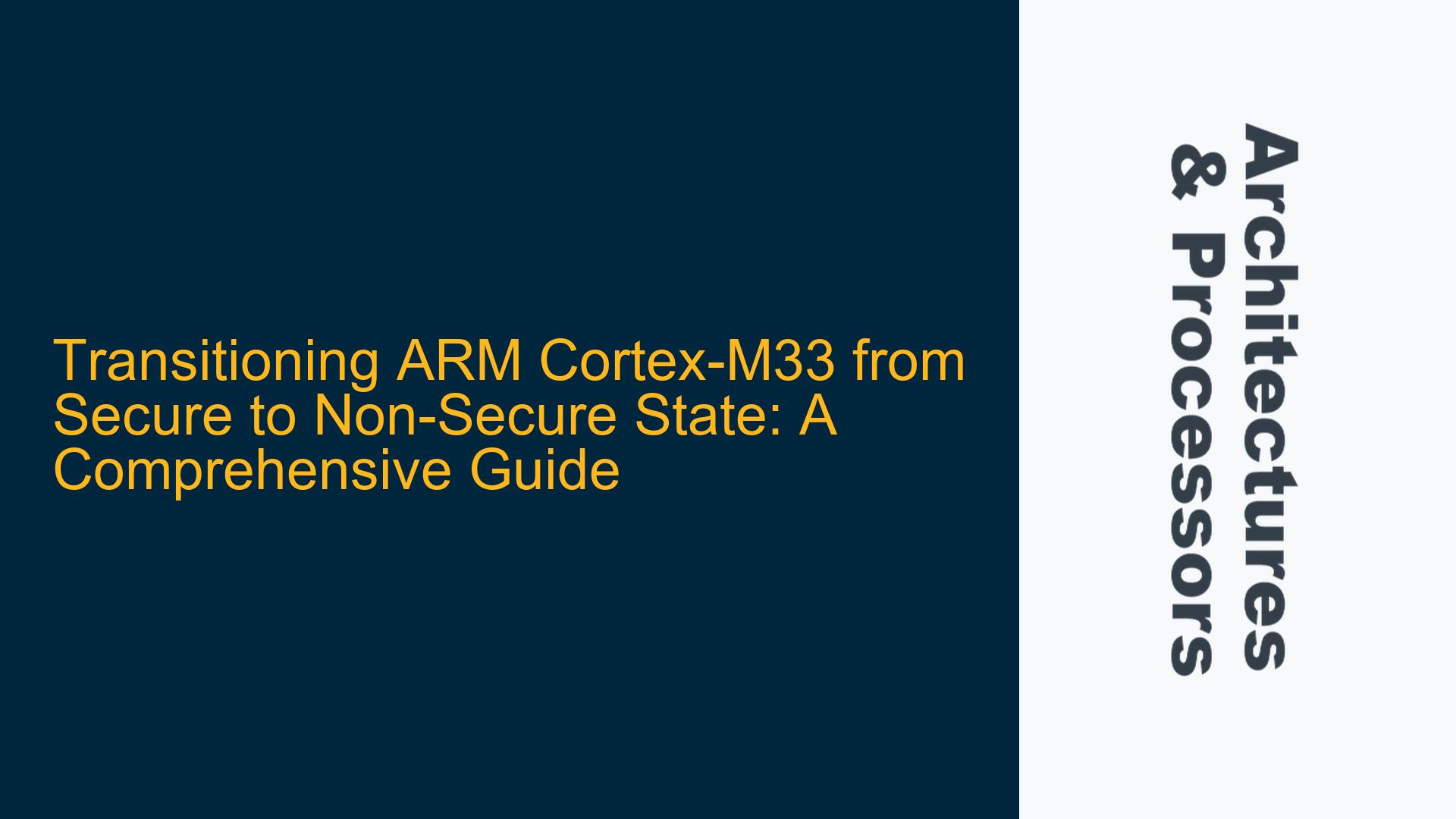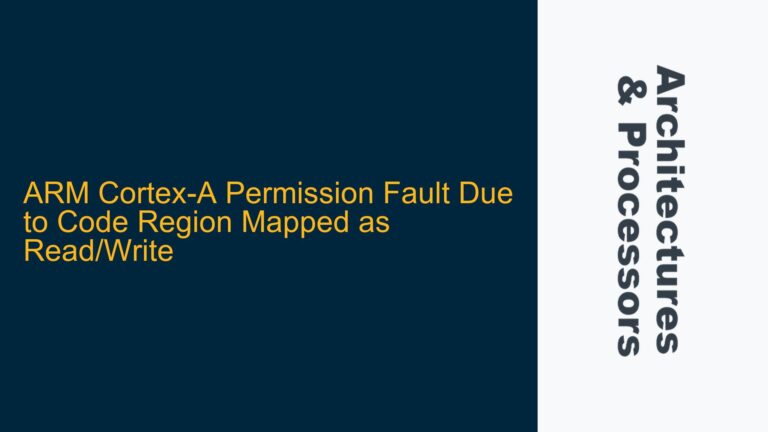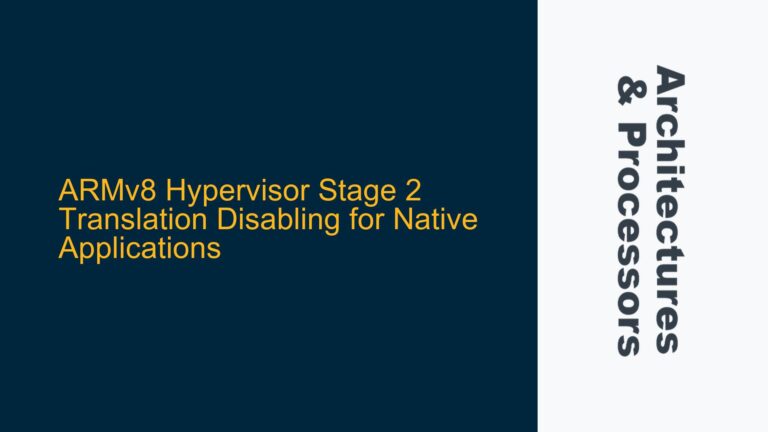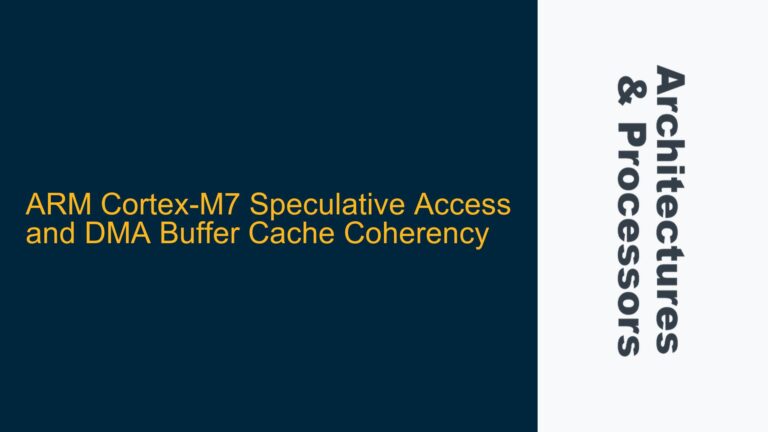ARM Cortex-M33 Secure to Non-Secure State Transition Challenges
The ARM Cortex-M33 processor, part of the ARMv8-M architecture, introduces a robust security model that partitions the system into Secure and Non-Secure states. This partitioning is crucial for applications requiring high levels of security, such as IoT devices, where sensitive data and critical operations must be isolated from less trusted code. However, transitioning the Cortex-M33 from Secure to Non-Secure state, especially immediately after reset, presents several challenges. This transition is not straightforward due to the intricate security mechanisms embedded in the ARMv8-M architecture, which are designed to prevent unauthorized state changes that could compromise system integrity.
The primary challenge lies in the fact that the Cortex-M33 starts in Secure state by default after a reset. This is a security feature to ensure that the system boots into a trusted environment. However, for certain applications, it may be necessary to transition to Non-Secure state early in the boot process. This transition must be handled carefully to avoid security vulnerabilities and ensure that the system remains in a consistent state. The ARMv8-M architecture provides specific instructions and mechanisms to facilitate this transition, but they must be used correctly to avoid triggering faults or leaving the system in an undefined state.
One of the key instructions for transitioning from Secure to Non-Secure state is the BLXNS (Branch with Link and Exchange Non-Secure) instruction. This instruction is designed to handle the transition safely, but it comes with strict requirements. For instance, the target address must have bit[0] set to 0 to indicate a transition to Non-Secure state. If this condition is not met, the processor will raise an INVSTATE UsageFault exception, indicating an invalid state transition attempt. Additionally, the transition must be preceded by certain preparatory steps to ensure that the Non-Secure state is properly configured and that the system can safely continue execution in the Non-Secure environment.
BLXNS Instruction Requirements and Secure State Configuration
The BLXNS instruction is central to the Secure to Non-Secure state transition in the ARM Cortex-M33. This instruction is specifically designed to handle the transition while maintaining the security integrity of the system. However, using BLXNS requires a deep understanding of the ARMv8-M security model and careful configuration of the processor’s state before the transition is attempted.
The BLXNS instruction operates by branching to a subroutine at a specified address, with the address and instruction set determined by a register. The key feature of BLXNS is that it can trigger a transition from Secure to Non-Secure state if bit[0] of the target address is 0. This bit is crucial because it signals the processor to switch states. However, the ARMv8-M architecture only supports the Thumb-2 instruction set, so bit[0] must be 1 to indicate a valid Thumb-2 address. If bit[0] is 0, the processor will raise an INVSTATE UsageFault exception, as this would indicate an attempt to switch to an unsupported instruction set.
Before executing the BLXNS instruction, several preparatory steps must be taken to ensure a safe transition. First, the Non-Secure state must be properly configured. This includes setting up the Non-Secure vector table, configuring the Non-Secure memory map, and ensuring that any necessary Non-Secure peripherals are initialized. The Secure state must also be configured to allow the transition. This involves setting the appropriate bits in the Security Attribution Unit (SAU) and the Implementation Defined Attribution Unit (IDAU), which control the memory and peripheral access permissions for the Secure and Non-Secure states.
Another critical aspect is the handling of the stack pointer. The Cortex-M33 has separate stack pointers for Secure and Non-Secure states, and these must be correctly initialized before the transition. The Secure stack pointer must be set up to handle any Secure state operations that may occur during the transition, while the Non-Secure stack pointer must be initialized to handle Non-Secure state operations after the transition. Failure to properly configure the stack pointers can lead to stack corruption and unpredictable behavior.
Implementing Secure to Non-Secure Transition in Reset Handler
Implementing the Secure to Non-Secure state transition in the reset handler requires a systematic approach to ensure that all necessary configurations are in place before the transition is attempted. The reset handler is the first code executed after a processor reset, making it the ideal place to perform the transition if required. However, the reset handler must be carefully crafted to handle the complexities of the ARMv8-M security model and ensure a smooth transition.
The first step in the reset handler is to initialize the Secure state. This includes setting up the Secure vector table, configuring the SAU and IDAU, and initializing any Secure peripherals. The Secure stack pointer must also be initialized to ensure that the reset handler can execute without issues. Once the Secure state is configured, the next step is to prepare for the transition to Non-Secure state.
To prepare for the transition, the Non-Secure vector table must be set up. This involves defining the Non-Secure exception handlers and ensuring that the Non-Secure memory map is correctly configured. The Non-Secure stack pointer must also be initialized to handle Non-Secure state operations. Additionally, any Non-Secure peripherals that will be used after the transition must be initialized.
Once the Non-Secure state is prepared, the reset handler can proceed with the transition. This is done by executing the BLXNS instruction with the target address set to the Non-Secure reset handler. The target address must have bit[0] set to 0 to indicate the transition to Non-Secure state. If the transition is successful, the processor will begin executing the Non-Secure reset handler, and the system will continue booting in Non-Secure state.
However, if the transition fails, the processor will raise an INVSTATE UsageFault exception. This can occur if the target address does not have bit[0] set to 0, or if the preparatory steps were not correctly executed. In such cases, the reset handler must handle the exception and either retry the transition or fall back to a safe state.
In conclusion, transitioning the ARM Cortex-M33 from Secure to Non-Secure state is a complex process that requires a deep understanding of the ARMv8-M security model and careful configuration of the processor’s state. By following the steps outlined above, developers can ensure a smooth and secure transition, allowing their applications to take full advantage of the Cortex-M33’s security features.






